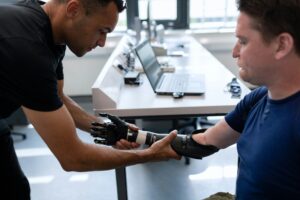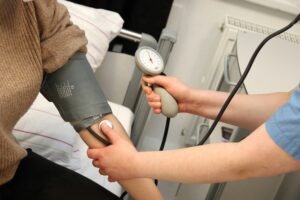Easiest Medical School in Europe
Becoming a doctor in the United States can be one of the most satisfying and well-paying professions know the easiest medical school. The admissions process to medical schools is, on average, difficult, with acceptance rates ranging from just 2 percent to 20 percent of candidates on average. To assist you in selecting the most appropriate school for you, we studied the best degree programmes available in the medical industry. We compiled this list of the most difficult medical schools to get into.

University of Mississippi Medical Center
The University of Mississippi School of Medicine is a four-year school in Jackson, Mississippi, leading to a doctor of medicine degree. Students participate in research, training, and clinical practice, emphasising providing care to Mississippi’s varied people and underserved populations. This is Mississippi’s sole medical centre of its sort, and it aspires to build strong professional networks and opportunities.
Mercer University School of Medicine
The Mercer University School of Medicine has facilities throughout Georgia, including a four-year M.D. programme in Macon and Savannah. Students can also apply to a rural health sciences doctoral programme, a master’s degree in family therapy, and associated medical programmes. Although MUSM is more accessible than many other medical schools, the M.D. programme is solely available to Georgia residents.
East Carolina University
The Brody School of Medicine at East Carolina University in Greenville, North Carolina, offers PhD, M.D., dual M.D./MBA, and master’s degrees in public health programmes. Students can choose an independent study topic and complete a capstone project as part of the M.D. program’s four distinction track options. Summer Program for Future Doctors may be of interest to pre-med students.
University of North Dakota School of Medicine
The University of North Dakota’s School of Medicine and Health Sciences is located in Grand Forks, ND, and offers a large tuition discount to North Dakota and Minnesota residents. They also have a Native American student called Indians into Medicine (INMED) programme. Each year, 78 applicants are accepted into the four-year M.D. programme, which includes two years on the Grand Forks campus and two years in clinics across the state.
University of Missouri-Kansas City School of Medicine
The University of Missouri-Kansas City School of Medicine provides a variety of degrees, including a master of health professions education, a master of science in bioinformatics, a doctor of medicine, and a combined degree B.A./M.D. Degree. The combined programme is offered to qualifying high school graduates and takes six years to finish. Out-of-state students are welcome to apply, but those from Missouri and adjacent states are given precedence. Students are taught in groups of ten to twelve and practise realistic body simulators.
University of South Dakota
The University of South Dakota’s Sanford School of Medicine offers M.D. programmes and related biological degrees. The Frontier and Rural Medicine (FARM) programme, for example, places students on a nine-month track to study rural medicine at local clinics. Non-residents must have strong ties to the state, such as having family in the state, graduating from a local high school or college, or belonging to a federally recognised tribe.
Augusta University
Students can combine their M.D. with a master of business administration (MBA) or a master of public health (MPH) at Augusta University’s Medical College of Georgia (MPH). The combined MBA programme emphasises both clinical and management abilities, preparing students to negotiate the healthcare system in the United States. The M.D./MPH programme focuses on public health and community service. The M.D. programme is four years long, whereas the combined programme is five years long.
University of Oklahoma
The University of Oklahoma’s College of Medicine provides three degrees: an M.D., a dual degree (M.D./Ph.D.), and a physician associate programme. The Oklahoma City site offers 140 students each class and access to a 200-acre medical centre, while the Tusla track has smaller courses (25-30 students) focusing on community health.
The University of Arkansas for Medical Sciences
Since 1879, the UAMS College of Medicine has offered M.D./Ph.D., M.D./MPH, and rural practice programmes. It is one of the first schools in the country and of the easiest medical school, according to its website, to train pupils utilising deep brain stimulation technology. Throughout their degree programme, all students are assigned to one of several academic houses, which provide academic, social, and professional assistance.





